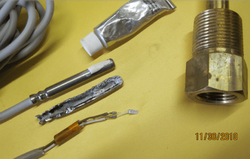I'm puttering with my Arduino and going to start attaching sensors. I want to make a dip tube from copper (for the tank) with the thermistor inside it. My question is can I submerge the thermistor in thermal paste or will that kill the thermistor?
Thanks
Thanks


